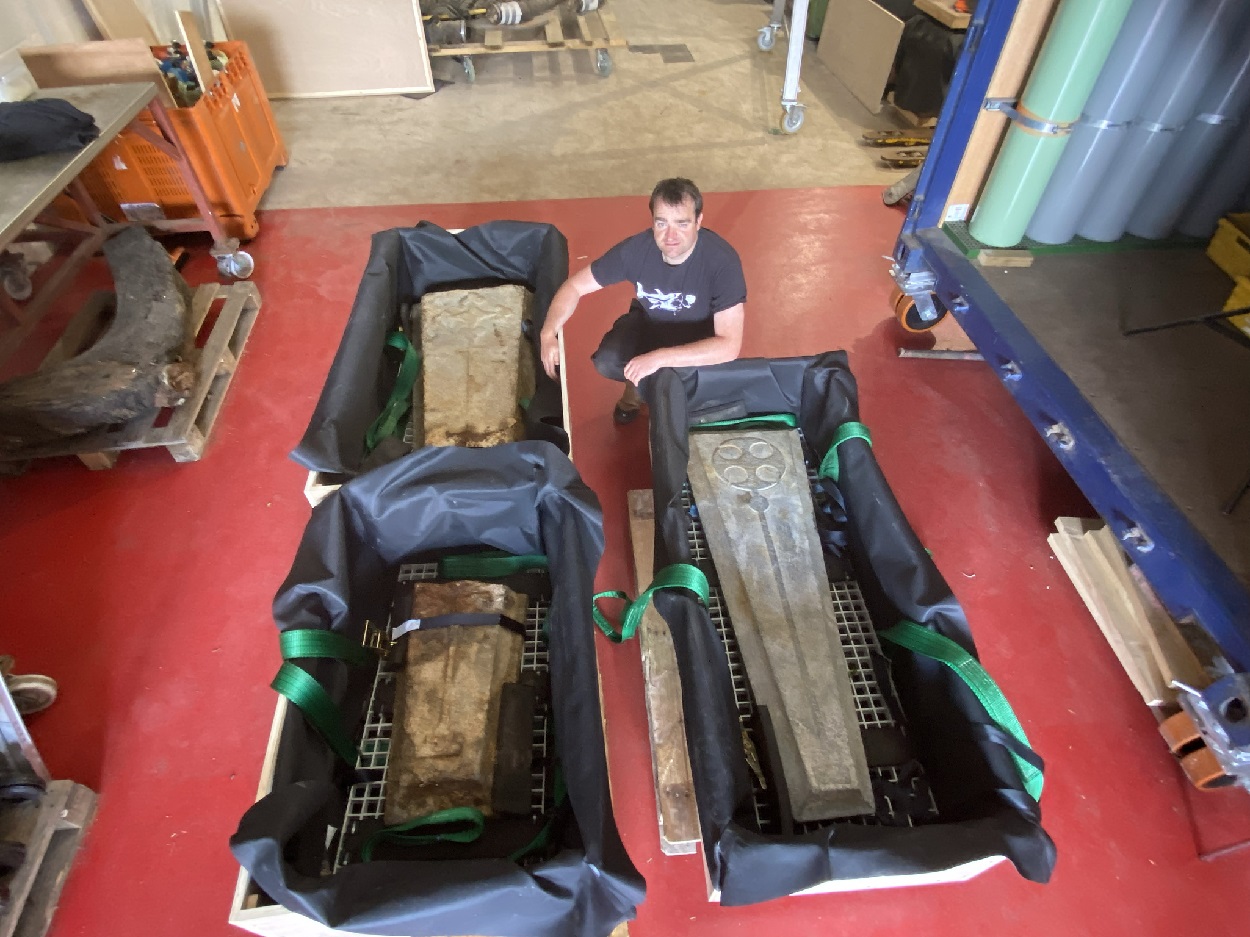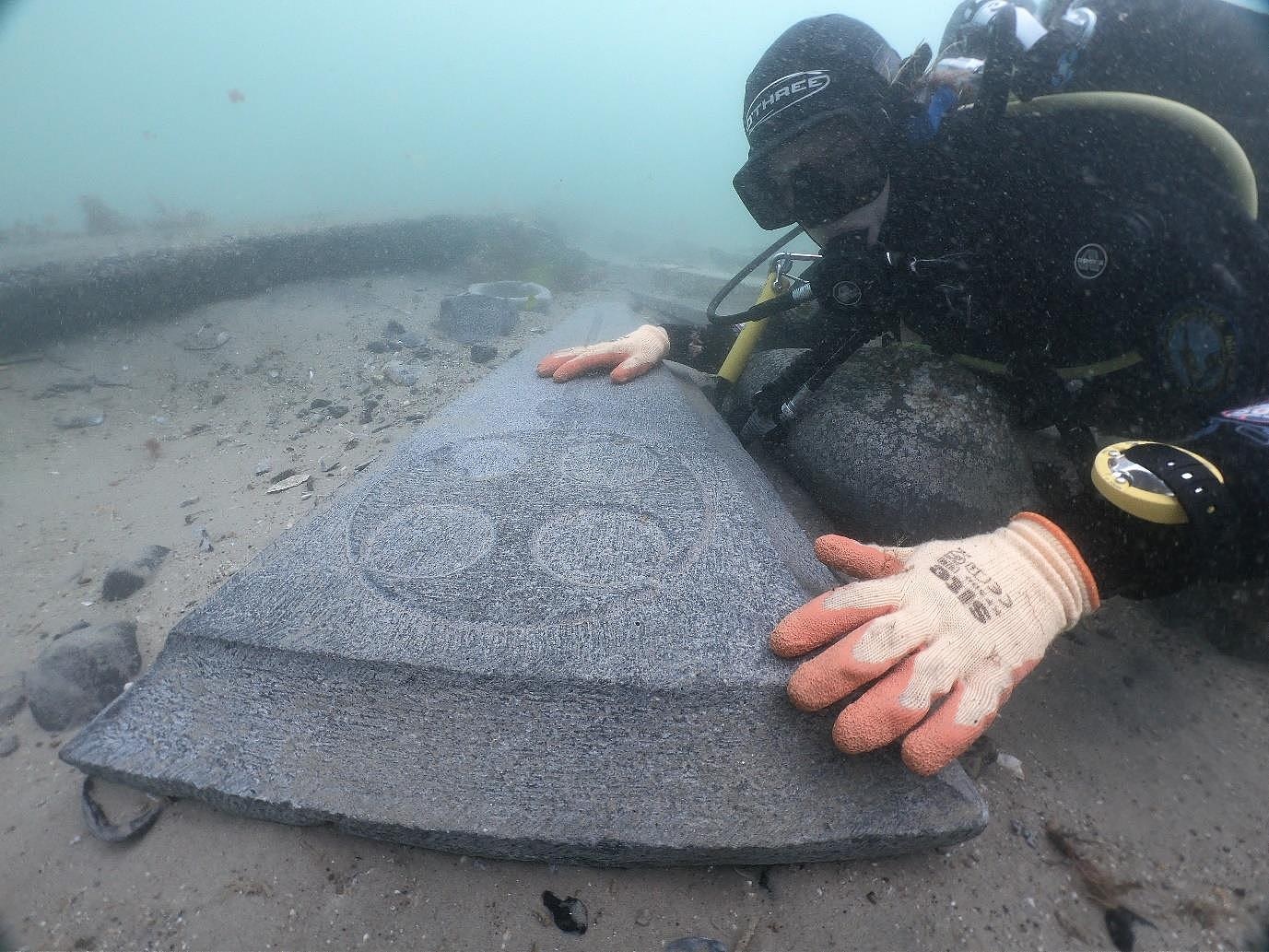Underwater archaeologists from Bournemouth University have recovered two medieval grave slabs from a shipwreck off the coast of Dorset, England.
The gave slabs were found at the site of the Mortar Wreck, a 13th century ship that sunk in Studland Bay. The Mortar Wreck was discovered in 1982, thought at the time to be nothing more than a pile of rubble on the seabed.
Further studies revealed that the site was a historic shipwreck dating back to the reign of Henry III. The ship had been transporting a cargo of grinding mortars, cauldrons, cups, pottery, and various domestic objects.
A recent project led by Bournemouth University has recovered two grave slabs made from Purbeck marble. Purbeck marble is a fossiliferous limestone found in the Isle of Purbeck, a peninsula in south-east Dorset.

Purbeck marble was quarried during the Romano-British and medieval periods, where it was used for architectural mouldings and veneers, mortars and pestles, and other articles.
It can be found in almost all the cathedrals of the south of England, as well as Exeter, Ely, Norwich, Chichester, Salisbury, Lincoln, Llandaff, Southwark and Canterbury Cathedrals, and in Westminster Abbey.
According to the researchers, both slabs have carvings depicting a Christian cross and were likely intended to be coffin lids or crypt monuments for high ranking members of the clergy. One slab measures 1.5 metres in length, while the other slab (which is in two pieces), has a combined length of 2 metres.
“The wreck went down in the height of the Purbeck stone industry and the grave slabs we have here were a very popular monument for bishops and archbishops across all the cathedrals and monasteries in England at the time,” explained Tom Cousins, a Maritime Archaeologist at Bournemouth University who led the recovery.
Header Image Credit : Bournemouth University
Sources : Bournemouth University





